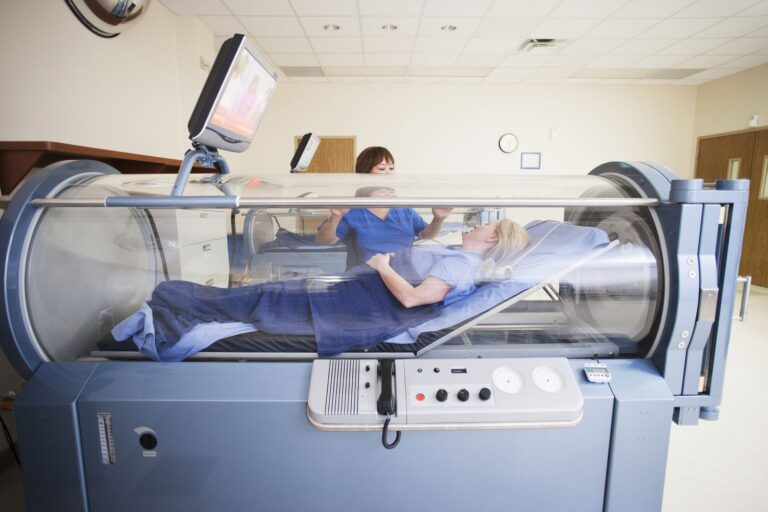Table of Contents
HBOT involves breathing pure oxygen in a pressurized room or container. This approach increases the amount of oxygen your blood can carry, promoting healing and fighting infection.
HBOT’s principle is based on increasing atmospheric pressure, which allows a higher concentration of oxygen to be dissolved in the bloodstream. This enhanced oxygen level can aid in repairing tissues and restoring normal body functions.
The great option is that you can now use advanced solutions and recover by using hbot at home. Also, we will share mode details about medical conditions that this procedure can treat.
Specific Health Issues and HBOT
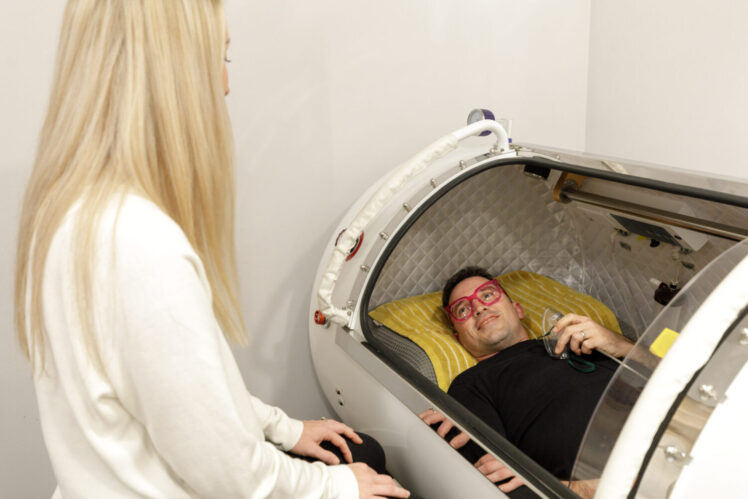
The use of hyperbaric oxygen therapy (HBOT) has been increasingly recognized for its effectiveness in treating a variety of specific health issues.
Diabetes
Diabetic patients often face complications in wound healing due to impaired blood flow and nerve damage. These chronic wounds, if untreated, can lead to severe infections and even amputations.
HBOT aids in healing by enhancing oxygen supply to the affected tissues, which is crucial for diabetic wound management. This increased oxygenation stimulates the growth of new blood vessels and enhances white blood cell function, both critical for wound healing.
Carbon Monoxide Poisoning
Carbon monoxide poisoning poses a severe threat as it binds to hemoglobin more effectively than oxygen, depriving organs of necessary oxygen. This can lead to serious neurological and cardiac complications. By providing high concentrations of oxygen, it rapidly replaces carbon monoxide in hemoglobin, minimizing tissue damage and preventing long-term neurological sequelae.
Necrotizing Fasciitis
Necrotizing fasciitis, a life-threatening bacterial infection, spreads quickly and destroys skin, fat, and muscle tissue. Timely and aggressive treatment is crucial for survival. In cases of necrotizing fasciitis, HBOT can be a lifesaver. It halts the spread of infection by delivering high oxygen levels, which are toxic to the anaerobic bacteria responsible for this condition.
Recovery from Radiation
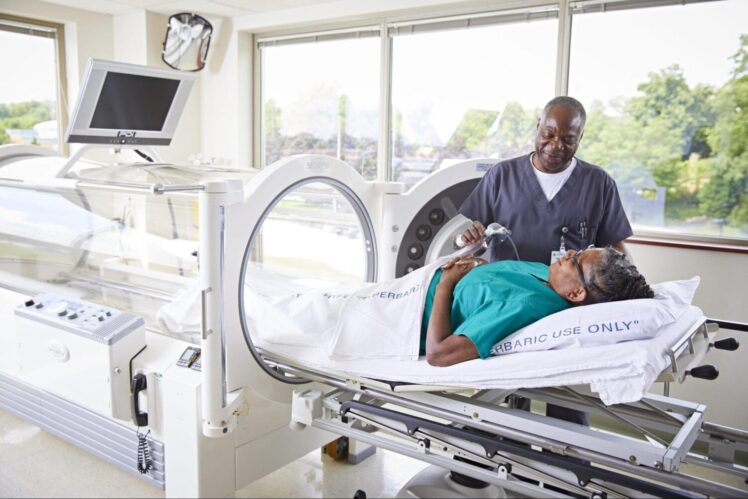
Patients undergoing radiation therapy, especially for head, neck, and pelvic cancers, often suffer from radiation-induced injuries. These include radiation cystitis, proctitis, and osteoradionecrosis.
HBOT has shown efficacy in healing radiation-induced injuries by promoting neovascularization in irradiated tissues. This improved blood flow helps in repairing damaged tissues and mitigating the side effects of radiation therapy.
Crush Injuries
Crush injuries and compartment syndrome, often resulting from severe trauma, lead to a significant reduction in blood flow and oxygen to the tissues. HBOT is beneficial in these conditions as it reduces swelling, improves oxygenation, and limits further tissue damage. The therapy is particularly effective when implemented early in the treatment process.
Brain Injury Recovery
Brain injuries, whether from trauma, stroke, or other causes, can lead to long-term cognitive and physical impairments. Traditional treatments are often limited in their effectiveness. Research indicates that HBOT can improve outcomes in brain injury cases. It promotes healing process by enhancing oxygen delivery to brain tissues, potentially improving neurological function and reducing inflammation.
Chronic Refractory Osteomyelitis
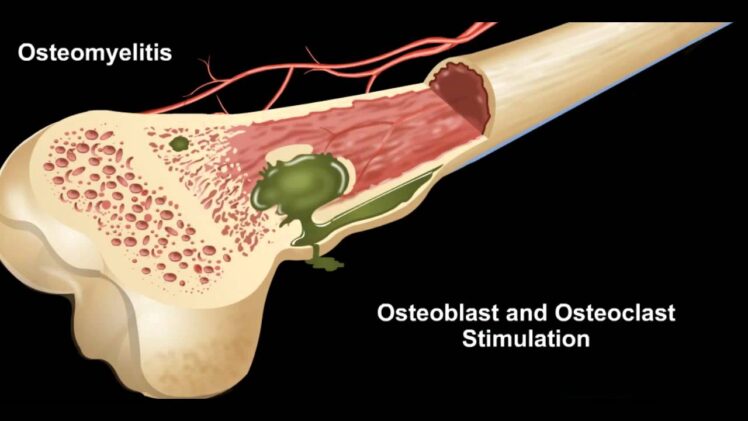
Chronic refractory osteomyelitis, a persistent and recurrent bone infection, often resists conventional treatments, posing a challenge for both patients and physicians. HBOT has been successful in treating this condition by delivering high levels of oxygen to the affected bone, which not only inhibits anaerobic bacterial growth but also enhances the effectiveness of antibiotics and supports bone regeneration.
Idiopathic Sudden Sensorineural Hearing Loss
This condition involves a rapid loss of hearing, typically in one ear, without an identifiable cause, and can be quite distressing for patients. There is growing evidence that early intervention with HBOT can improve recovery rates in patients with sudden sensorineural hearing loss. The therapy is thought to improve inner ear oxygenation, reducing cell damage and promoting recovery.
Benefits and Limitations
While the benefits of HBOT are clear in certain scenarios, it’s crucial to understand its limitations and potential risks.
Therapeutic Advantages
- Enhanced Wound Healing: One of the most notable benefits of HBOT is its ability to expedite wound healing, particularly in cases where traditional treatments have failed.
- Infection Control: HBOT has shown remarkable efficacy in managing infections, especially those caused by anaerobic bacteria.
- Neurological Improvement: Emerging research suggests potential benefits of HBOT in neurological conditions like stroke and traumatic brain injuries.
- Adjunctive Therapy: It has proven to be a valuable adjunctive treatment. When combined with other medical interventions, it can enhance overall treatment efficacy, particularly in managing complex conditions like diabetic foot ulcers, radiation injuries, and severe infections.
Convenience
- Portable Designs: Recent advancements in HBOT technology have led to the development of portable chambers. These are smaller and more user-friendly than traditional, hospital-grade models, making them suitable for home use.
- Simplicity: Modern home-use HBOT chambers are designed for simplicity. Many models are equipped with user-friendly controls and clear instructions, making it possible for individuals or caregivers to operate them without specialized medical training.
- Safety Features: Home HBOT devices typically operate at lower pressures than those used in clinical settings, which reduces the risk of complications like barotrauma or oxygen toxicity.
- Customized Treatment Schedules: Owning an HBOT chamber allows patients to follow a treatment schedule that fits their personal routine and lifestyle, offering greater flexibility than clinic-based sessions.
What Are the Limitations?
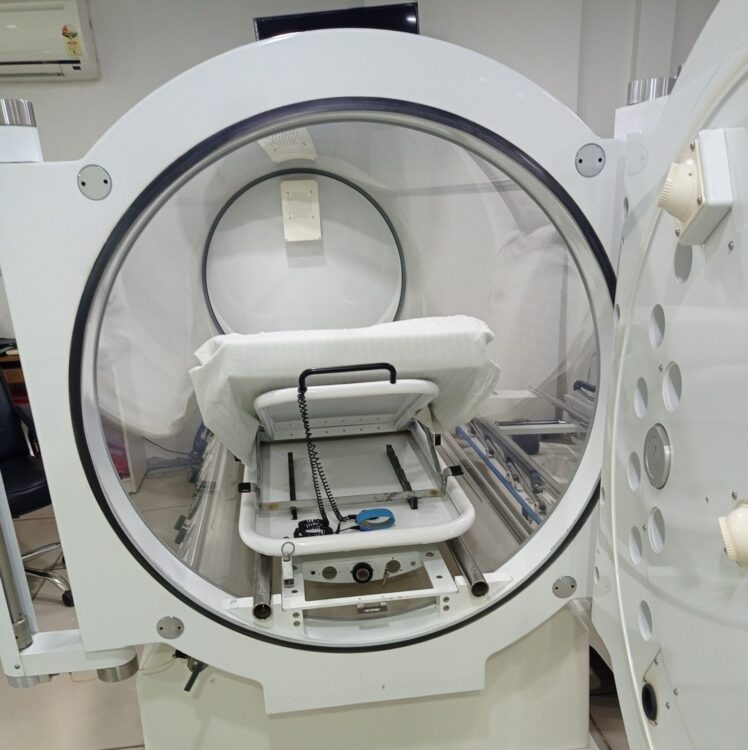
- Not a Standard Treatment: It is not a cure-all and works best when integrated into a comprehensive treatment plan that may include surgery, antibiotics, and other therapies.
- Selective Effectiveness: The effectiveness varies depending on the condition being treated.
- Accessibility and Cost: It requires specialized equipment and trained personnel.
Potential Risks and Side Effects
- Pressure-Related Injuries: Due to the increased atmospheric pressure in HBOT chambers, patients may experience ear and sinus discomfort, similar to what one might experience during air travel.
- Vision Changes: Temporary vision changes can occur as a side effect. These changes are usually minor and reversible but need to be monitored, especially in patients undergoing multiple sessions.
- Oxygen Toxicity: Although rare, prolonged exposure to high levels of oxygen can lead to oxygen toxicity, impacting the lungs and central nervous system. This risk necessitates careful monitoring of treatment duration and oxygen concentration.
- Claustrophobia Concerns: The enclosed nature may cause discomfort or anxiety in patients with claustrophobia, requiring additional support and sometimes sedation.
Conclusion
While HBOT presents a promising therapeutic option for various medical conditions, its application should be guided by a thorough understanding of its benefits and limitations. It requires a tailored approach, considering individual patient needs and the specific nature of the medical condition. With ongoing research and advancements, the role of HBOT in medical treatment is expected to evolve, potentially expanding its benefits to a broader range of patients and conditions.

